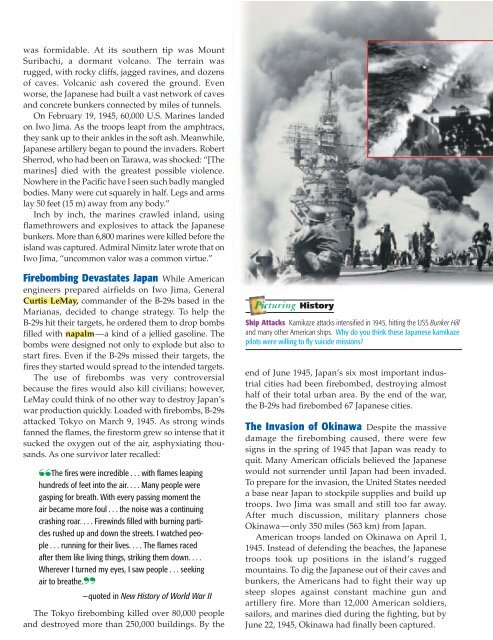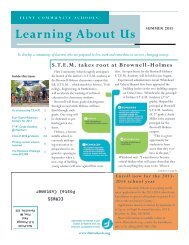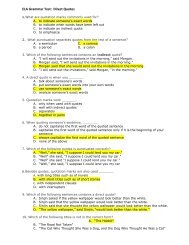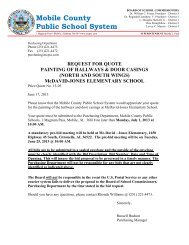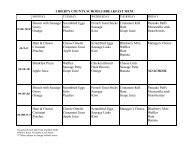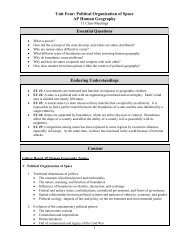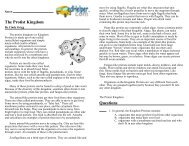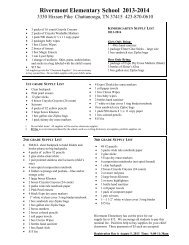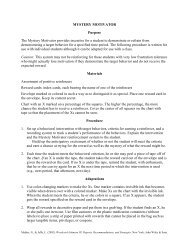Chapter 12: America and World War II, 1941-1945 - Georgia ...
Chapter 12: America and World War II, 1941-1945 - Georgia ...
Chapter 12: America and World War II, 1941-1945 - Georgia ...
Create successful ePaper yourself
Turn your PDF publications into a flip-book with our unique Google optimized e-Paper software.
was formidable. At its southern tip was Mount<br />
Suribachi, a dormant volcano. The terrain was<br />
rugged, with rocky cliffs, jagged ravines, <strong>and</strong> dozens<br />
of caves. Volcanic ash covered the ground. Even<br />
worse, the Japanese had built a vast network of caves<br />
<strong>and</strong> concrete bunkers connected by miles of tunnels.<br />
On February 19, <strong>1945</strong>, 60,000 U.S. Marines l<strong>and</strong>ed<br />
on Iwo Jima. As the troops leapt from the amphtracs,<br />
they sank up to their ankles in the soft ash. Meanwhile,<br />
Japanese artillery began to pound the invaders. Robert<br />
Sherrod, who had been on Tarawa, was shocked: “[The<br />
marines] died with the greatest possible violence.<br />
Nowhere in the Pacific have I seen such badly mangled<br />
bodies. Many were cut squarely in half. Legs <strong>and</strong> arms<br />
lay 50 feet (15 m) away from any body.”<br />
Inch by inch, the marines crawled inl<strong>and</strong>, using<br />
flamethrowers <strong>and</strong> explosives to attack the Japanese<br />
bunkers. More than 6,800 marines were killed before the<br />
isl<strong>and</strong> was captured. Admiral Nimitz later wrote that on<br />
Iwo Jima, “uncommon valor was a common virtue.”<br />
Firebombing Devastates Japan While <strong>America</strong>n<br />
engineers prepared airfields on Iwo Jima, General<br />
Curtis LeMay, comm<strong>and</strong>er of the B-29s based in the<br />
Marianas, decided to change strategy. To help the<br />
B-29s hit their targets, he ordered them to drop bombs<br />
filled with napalm—a kind of a jellied gasoline. The<br />
bombs were designed not only to explode but also to<br />
start fires. Even if the B-29s missed their targets, the<br />
fires they started would spread to the intended targets.<br />
The use of firebombs was very controversial<br />
because the fires would also kill civilians; however,<br />
LeMay could think of no other way to destroy Japan’s<br />
war production quickly. Loaded with firebombs, B-29s<br />
attacked Tokyo on March 9, <strong>1945</strong>. As strong winds<br />
fanned the flames, the firestorm grew so intense that it<br />
sucked the oxygen out of the air, asphyxiating thous<strong>and</strong>s.<br />
As one survivor later recalled:<br />
The fires were incredible . . . with flames leaping<br />
“<br />
hundreds of feet into the air.... Many people were<br />
gasping for breath. With every passing moment the<br />
air became more foul . . . the noise was a continuing<br />
crashing roar.... Firewinds filled with burning particles<br />
rushed up <strong>and</strong> down the streets. I watched people<br />
. . . running for their lives. . . . The flames raced<br />
after them like living things, striking them down. . . .<br />
Wherever I turned my eyes, I saw people . . . seeking<br />
air to breathe.<br />
”<br />
—quoted in New History of <strong>World</strong> <strong>War</strong> <strong>II</strong><br />
The Tokyo firebombing killed over 80,000 people<br />
<strong>and</strong> destroyed more than 250,000 buildings. By the<br />
History<br />
Ship Attacks Kamikaze attacks intensified in <strong>1945</strong>, hitting the USS Bunker Hill<br />
<strong>and</strong> many other <strong>America</strong>n ships. Why do you think these Japanese kamikaze<br />
pilots were willing to fly suicide missions?<br />
end of June <strong>1945</strong>, Japan’s six most important industrial<br />
cities had been firebombed, destroying almost<br />
half of their total urban area. By the end of the war,<br />
the B-29s had firebombed 67 Japanese cities.<br />
The Invasion of Okinawa Despite the massive<br />
damage the firebombing caused, there were few<br />
signs in the spring of <strong>1945</strong> that Japan was ready to<br />
quit. Many <strong>America</strong>n officials believed the Japanese<br />
would not surrender until Japan had been invaded.<br />
To prepare for the invasion, the United States needed<br />
a base near Japan to stockpile supplies <strong>and</strong> build up<br />
troops. Iwo Jima was small <strong>and</strong> still too far away.<br />
After much discussion, military planners chose<br />
Okinawa—only 350 miles (563 km) from Japan.<br />
<strong>America</strong>n troops l<strong>and</strong>ed on Okinawa on April 1,<br />
<strong>1945</strong>. Instead of defending the beaches, the Japanese<br />
troops took up positions in the isl<strong>and</strong>’s rugged<br />
mountains. To dig the Japanese out of their caves <strong>and</strong><br />
bunkers, the <strong>America</strong>ns had to fight their way up<br />
steep slopes against constant machine gun <strong>and</strong><br />
artillery fire. More than <strong>12</strong>,000 <strong>America</strong>n soldiers,<br />
sailors, <strong>and</strong> marines died during the fighting, but by<br />
June 22, <strong>1945</strong>, Okinawa had finally been captured.<br />
CHAPTER <strong>12</strong> <strong>America</strong> <strong>and</strong> <strong>World</strong> <strong>War</strong> <strong>II</strong> 613


